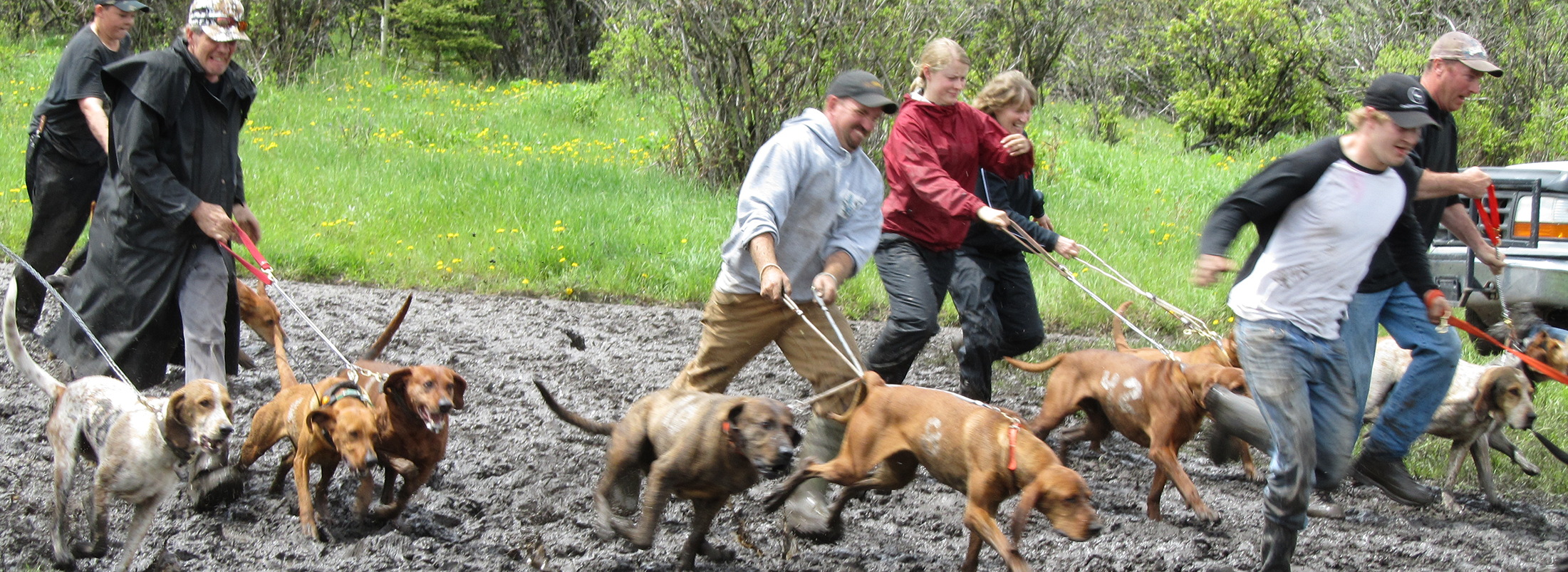Regulations

The following excerpts are from the Alberta Guide to Hunting Regulations.
Cougar Hunting Privileges on Private Land
Any person who is the owner or occupant of privately owned land may at any time of the year, hunt (but not trap) cougar on such lands without a licence. The use of dogs is prohibited. Under this authority, registration is required within one week of the kill, and the owner or occupant may keep the cougar.
Cougar Kittens with Spotted Fur
It is unlawful to hunt a cougar kitten with spotted fur or a female cougar accompanied by a cougar kitten with spotted fur.
Before shooting, hunters should carefully evaluate whether a cougar has spots or whether it is accompanied by another cougar that has spots.
Cougar Management Area Quota Exceptions
Cougar harvested during the fall season (November 1 to November 30) and those harvested as authorized by owners and occupants of private land do not count towards the quotas established for cougar that are harvested in each Cougar Management Area.
Cougar Meat Consumption
To prevent possible exposure to trichinosis, a parasitic infection, cougar meat should be thoroughly cooked before it is consumed by humans or pets. Hunters are not required to salvage or consume cougar meat.
- Except for cougar taken under the landowner (or occupant) authority, it is illegal to allow the skin of any cougar to be wasted, destroyed, spoiled or abandoned.
- There is no legal requirement to salvage the meat of cougar taken under the authority of a licence or taken under the landowner/occupant authority.
Exporting a Cougar from Alberta
- Persons exporting cougar to points outside Alberta must obtain a provincial export permit.
- Persons exporting cougar to points outside Canada must also obtain a federal export permit issued in accordance with the Convention on International Trade in Endangered Species of Wild Flora and Fauna (CITES).
Identifying Males and Females
From December 1 to the last day of February, the season for either male or female cougars may be closed in a Wildlife Management Unit while the season for the other sex remains open. In these cases, hunters must be able to identify the sex of a cougar prior to harvest.
- Adult male cougars have a conspicuous black spot approximately four-to-five inches (10-to-14 cm) below the anus.
- Female cougars have a much smaller, conspicuous black spot approximately one inch (two-to-three cm) below the anus. The black spot on female cougars is often hidden by the base of the tail.
Hunters are encouraged to use binoculars to look for the location of the black spot. It may be necessary to make the cougar shift position in order to get a good look. Banging a branch against the tree will often make the cougar move.
- For further reference, see: Identifying Cougar Males and Females at www.mywildalberta.com
Registration and Evidence of Sex
All harvested cougars must be registered at a Fish and Wildlife office.
- Cougars taken by resident or hunter-hosted non-resident hunters must be registered within one business day following the kill.
- Cougars taken under the authority of an Outfitter-Guide allocation must be registered within 5 business days following the kill.
- Cougars taken by owners or occupants of privately owned land must be registered within one week of the kill.
Evidence of Sex
The skin and skull must be submitted, complete with the evidence of sex attached and visible.
Evidence of sex consists of the scrotum for males and a teat or a portion of a mammary gland for females.
Age Determination
During registration, Fish and Wildlife staff will remove a premolar tooth for aging. This allows the Department to determine the age structure of the cougar harvest, which is used in setting quotas.
- If possible, cougars should be brought in for registration in an unfrozen condition so the tooth can be removed. It is also helpful to prop the jaw open with a stick before rigor sets in.
- The registration will not be considered complete until the tooth has been collected.
- Ages of cougars will be available, listed by registration number, within 18 months of the date of registration.
Tagging
Immediately after harvesting a cougar under the authority of a hunting licence, the appropriate tag must be affixed and securely locked to the skin. The tag must remain affixed until the skin is processed.
Use of Dogs
Dogs may be used to hunt cougars by holders of a resident, non-resident, or special cougar licence from December 1 to the last day of February in a Wildlife Management Unit where the season remains open.
The use of dogs is prohibited:
- during the fall (November 1 to November 30) season
- in Wildland Parks
- by persons harvesting cougars under the landowner/occupant authority on private land
Use of Predator Calls and Bait
Cougars may be hunted using mouth or hand operated calls. The use of electronic calls and bait is prohibited for hunting cougars.
To view the entire guide online or to order a printed copy, visit the My Wild Alberta website at: www.mywildalberta.com
